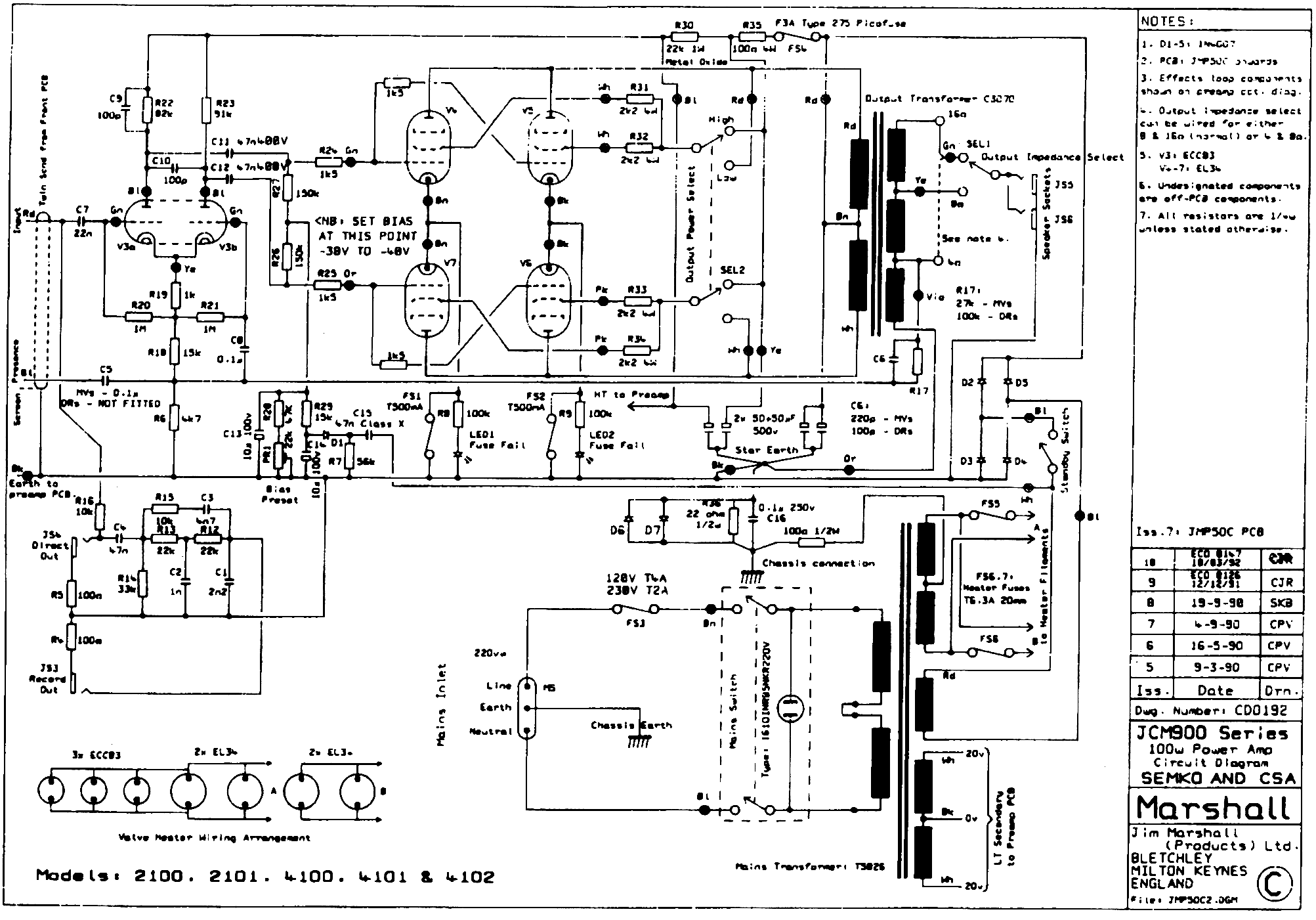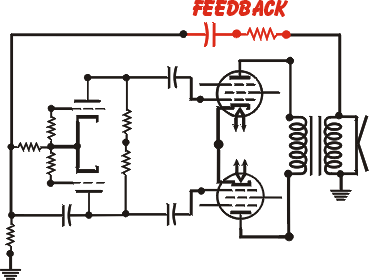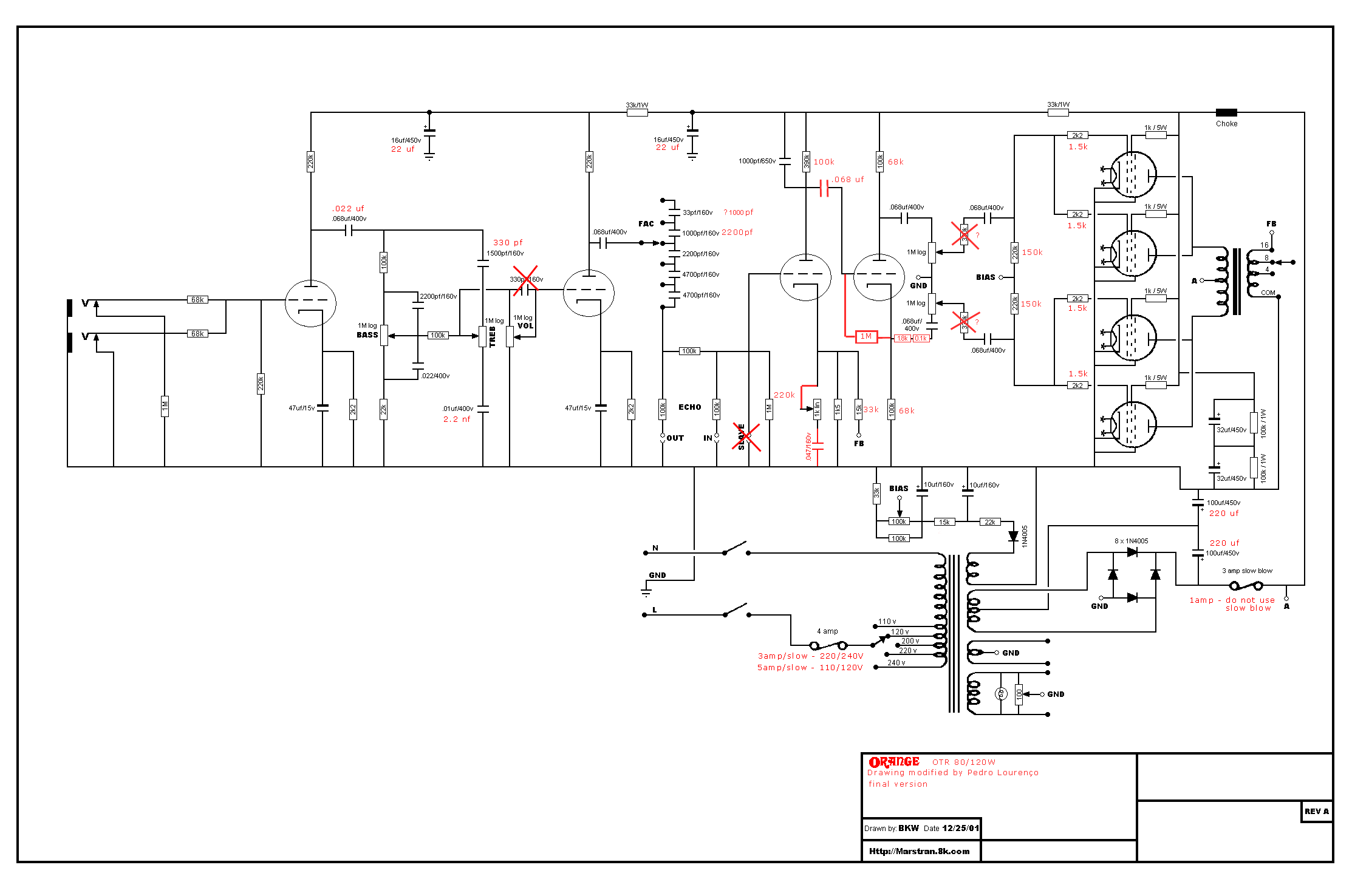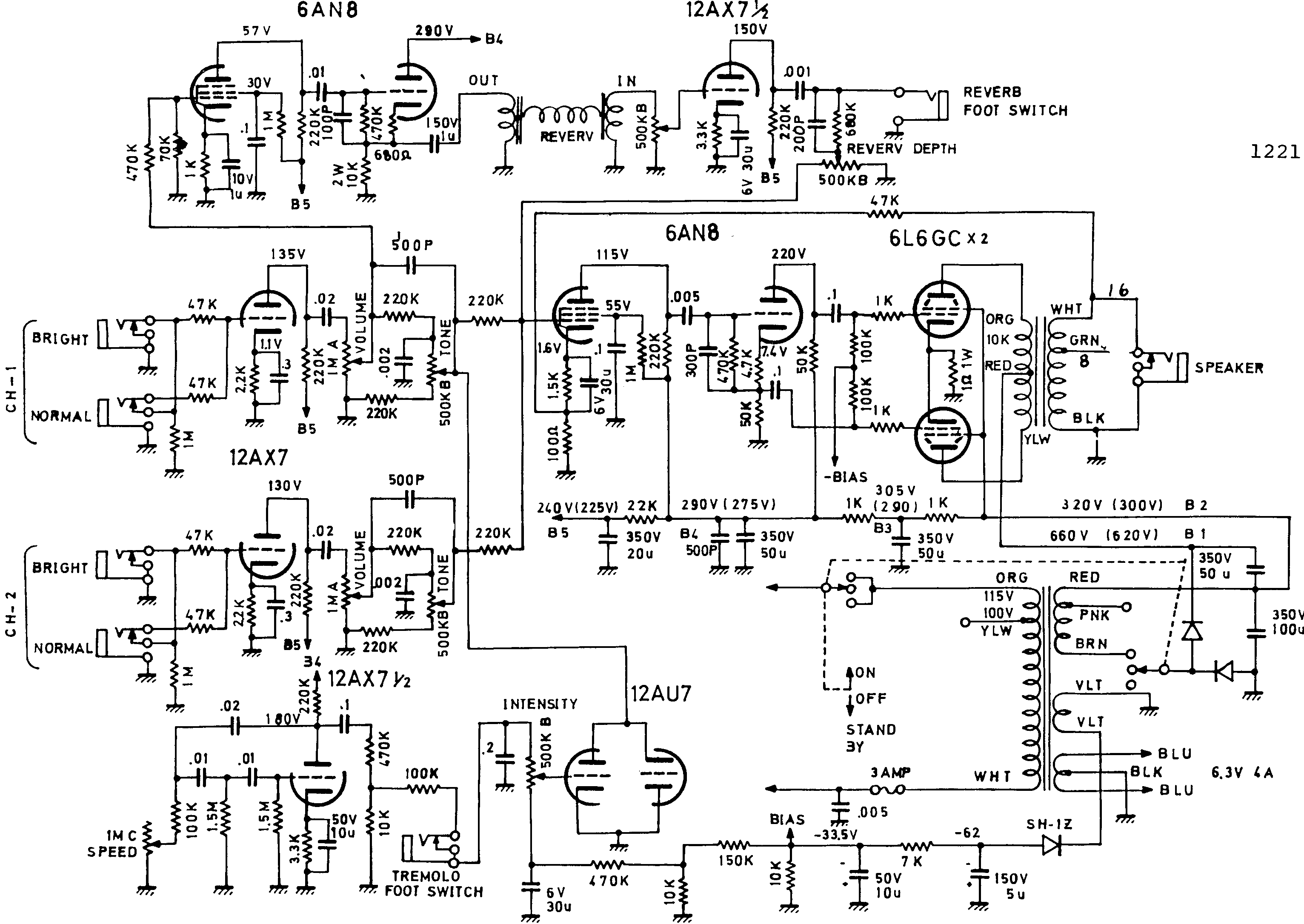
Mods for JCM900-4100

Modifications for the JCM900-4100 amplifier. Note that there are multiple versions of the schematic for this amplifier; proceed with caution. It is essential to verify which version of the board is present by matching part numbers with the schematics available.
The JCM900-4100 amplifier is a popular model known for its versatility and sound quality, often used in various musical genres. Due to the existence of multiple schematic versions, it is crucial to identify the specific version of the amplifier being worked on. This can be done by comparing the part numbers on the board with those listed in the corresponding schematics.
When performing modifications, it is recommended to follow a systematic approach to ensure that changes do not adversely affect the amplifier's performance. Common modifications may include changes to the gain structure, tone control adjustments, and power supply enhancements. Each modification should be documented carefully, and any original components should be retained to facilitate restoration if necessary.
Before proceeding with any modifications, a thorough understanding of the circuit operation is required. This includes familiarization with the signal path, the function of each stage, and the interaction between components. Safety precautions should also be observed, especially when dealing with high voltage areas of the amplifier.
When referencing schematics, attention should be given to component values, types, and configurations. Variations in resistor and capacitor values can significantly impact the amplifier's tonal characteristics. Therefore, any changes should be made with an understanding of how they will alter the overall sound.
In summary, modifying the JCM900-4100 requires careful identification of the schematic version and a comprehensive understanding of the circuit. Proper documentation and safety precautions are essential to ensure successful modifications while preserving the integrity of the amplifier's performance.Mods for JCM900-4100 Note: there are many versions of the schematic for this amp, proceed with caution!! VERIFY which version of the board you have by matching part numbers with the schematics posted. 🔗 External reference
The JCM900-4100 amplifier is a popular model known for its versatility and sound quality, often used in various musical genres. Due to the existence of multiple schematic versions, it is crucial to identify the specific version of the amplifier being worked on. This can be done by comparing the part numbers on the board with those listed in the corresponding schematics.
When performing modifications, it is recommended to follow a systematic approach to ensure that changes do not adversely affect the amplifier's performance. Common modifications may include changes to the gain structure, tone control adjustments, and power supply enhancements. Each modification should be documented carefully, and any original components should be retained to facilitate restoration if necessary.
Before proceeding with any modifications, a thorough understanding of the circuit operation is required. This includes familiarization with the signal path, the function of each stage, and the interaction between components. Safety precautions should also be observed, especially when dealing with high voltage areas of the amplifier.
When referencing schematics, attention should be given to component values, types, and configurations. Variations in resistor and capacitor values can significantly impact the amplifier's tonal characteristics. Therefore, any changes should be made with an understanding of how they will alter the overall sound.
In summary, modifying the JCM900-4100 requires careful identification of the schematic version and a comprehensive understanding of the circuit. Proper documentation and safety precautions are essential to ensure successful modifications while preserving the integrity of the amplifier's performance.Mods for JCM900-4100 Note: there are many versions of the schematic for this amp, proceed with caution!! VERIFY which version of the board you have by matching part numbers with the schematics posted. 🔗 External reference





